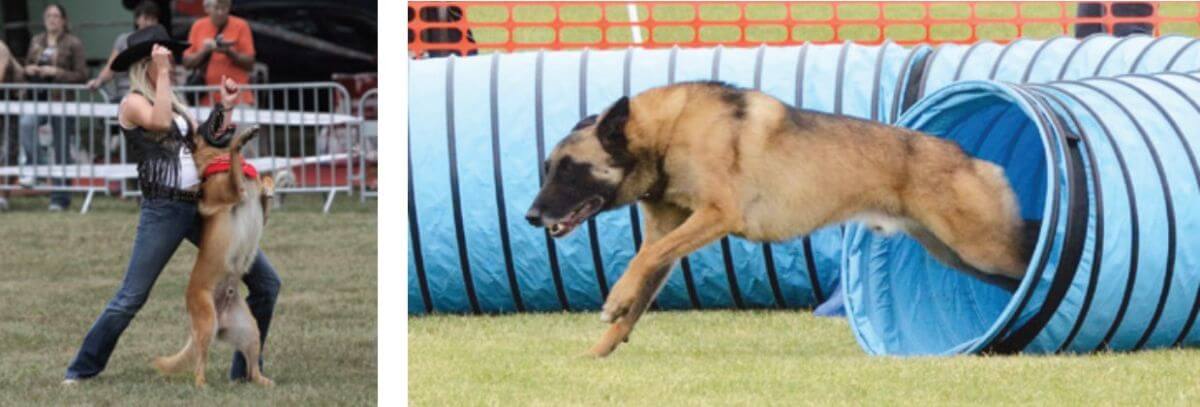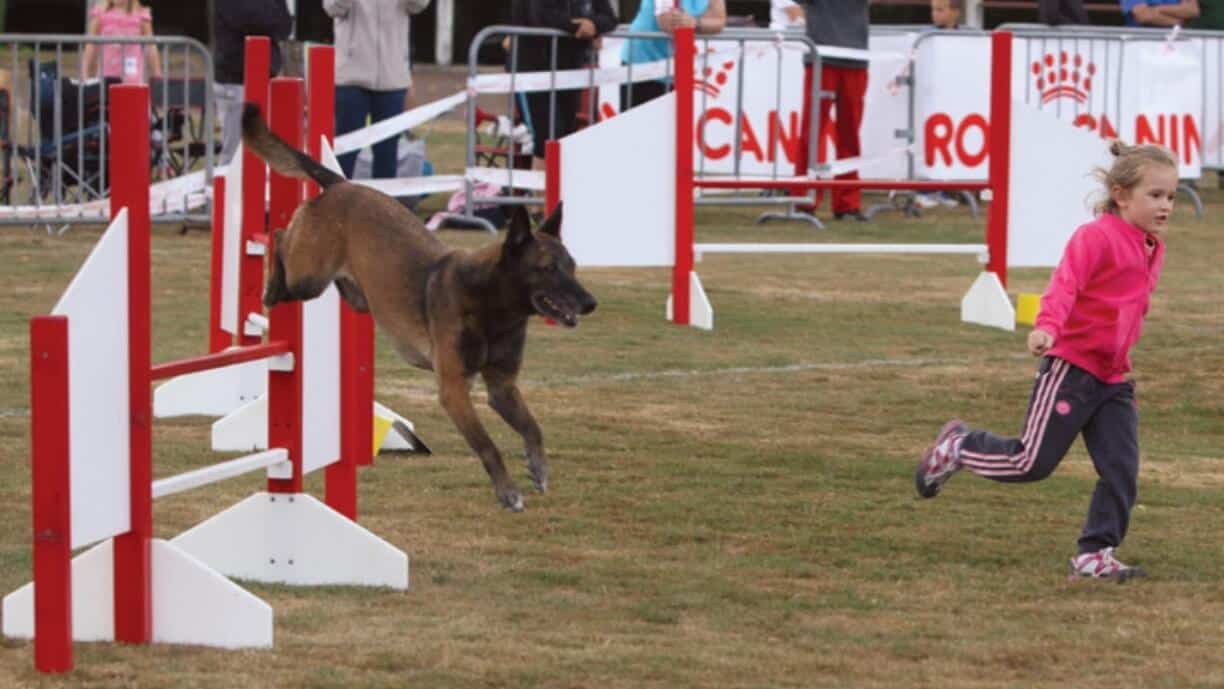This article was originally published in Showsight Magazine, January 2013 issue.
Living with the Belgian Malinois
At first glance, the Belgian Malinois may seem an unremarkable, rustic dog in an unglamorous short coat. But take a closer look. You won’t have to go further than their inquisitive, sparkling eyes to see there is a whole lot more under that plain brown fur!
A friend described the Malinois this way: “The Malinois is the Ferrari of the dog world: built for sport, powerful and instantly responsive to expert handling. But you can go right through the guardrail and over a cliff if you are a poor driver.”
Intrigued? I hope so! Please allow me to introduce that exotic sports edition amongst dog breeds, the Belgian Malinois.
The Belgian Malinois is known in its country of origin as a variety of the Belgian Shepherd Dog, along with its cousins, the Tervuren, Groenendael and Laekenois. It is distinguished by its business-like attire—a short, wash and wear type of coat.
In Belgium, April 1892, the newly formed Club du Chien de Berger Belge approved a written standard for the native herding dog of Belgium, as written by Professor Adolphe Reul. This standard defined it as a breed with three varieties: long hair, rough hair and short hair. It wasn’t until 1909 that the designation “Malinois” was used in an official show catalog to describe the shorthaired variety.
In May 1892, the first sheep trials in continental Europe were held in the markets of Cureghem-Brussels, Belgium. However, because of market conditions, the sheep population was rapidly declining in Belgium. Sheep-herding skills were becoming less valuable. Fortunately, the Belgian Shepherd Dog had already attracted many admirers, and new tests were designed to feature their talents. The first “dressage” trial showcasing the working talents of the Belgian Shepherd Dog took place in Malines, Belgium in July 1903. The Belgian Shepherd Dog, especially the Malinois, has enjoyed a reputation for its marvelous intellect and trainability ever since.
Like many herding breeds, the Belgian Malinois is known for its athleticism, intelligence and trainability. They’re brilliant, exuberant dogs that thrive on living and working with its owner.
In his book A Hundred Years of History of the Belgian Shepherd Dog, noted breed historian Jean-Marie Vanbutsele said “The Belgian Shepherd Dog possesses a particularity of the breed concerning its behaviour: it is characterized by a greater sensitivity than any other breeds; it is a hyper-affectionate. This feature is expressed in its relation with its master.”
He goes on to quote another breed authority, Dr. Yves Surget, who said, “With an impulsive character, the Belgian Shepherd is a dog who puts much vivacity in its responses to different stimuli.”
If you are getting the picture of an athletic, hugely devoted, highly responsive dog, you are getting close to the heart of the Belgian Malinois.

The Malinois loves its family, but is intensely bonded to its favorite person. When I move from room to room, my Malinois almost always follow. When an injury kept me immobile for a short period of time, all three of my dogs stayed close by. My 14-year old was snug in her bed on the floor, my 6-year old pressed up against me on the bed, and my 3-year old was always nearby in case I needed her and sometimes I did! She willingly retrieved my cell phone when it slipped to the floor, or brought me the remote control from the other side of the room, or (yes, she really does this!) brought me my slippers when asked.
Socialization is important for any dog, and even more so for herding breeds that instinctually notice everything in their environment. It is important for a young Malinois to be exposed to all the sights and sounds you expect her to cope with as an adult. For instance, Malinois raised with children are usually wonderful family members. While Malinois are naturally inclined to be reserved with strangers, the well-socialized dog is at ease in public spaces.
While the Belgian Malinois has a shorter coat than the Tervuren and Groenendael, its coat is of identical structure. It has a hard topcoat, along with a dense, wooly undercoat. The Malinois coat is simply shorter. While regular brushing is not needed to ward off coat tangles, it is needed on occasion to manage a shedding coat. In other words, we have dust-bunnies, too! And the vacuum sees regular activity in our home.
If you have a Malinois, you’ll need to plan activities for both of you! Fortunately, the Malinois continues to excel in a wide variety of sports. Most of our dogs are owner-handled in the conformation ring, and it is not at all unusual to find an owner-handler racing from the conformation ring to the obedience or rally ring at the same show. Malinois also shine in agility and tracking.
We are blessed to have a breed that is still proficient in herding. Because herding skills became unnecessary, many generations passed without being able to select for herding aptitude. And yet, even today, Malinois excel in herding. Over one dozen Malinois have achieved AKC Herding Championships. It speaks to the strength of our foundation gene pool, our breed’s heritage, our dedicated owners, as well as the ongoing selection for intelligence and working qualities.
Of course, you will also find Belgian Malinois at the highest levels in Ring Sport and IPO competitions. In addition, Malinois and their owners enjoy flyball, dock-diving, lure-coursing, freestyle, and disc-dog sports, just to name a few!
Life with a Belgian Malinois can be many things, but it is rarely boring. As my friend said, the Belgian Malinois can be likened to an exotic sports car. If you are prepared, you may be in for the ride of your life!
If you have a Malinois, you’ll need to plan activities for both of you!










